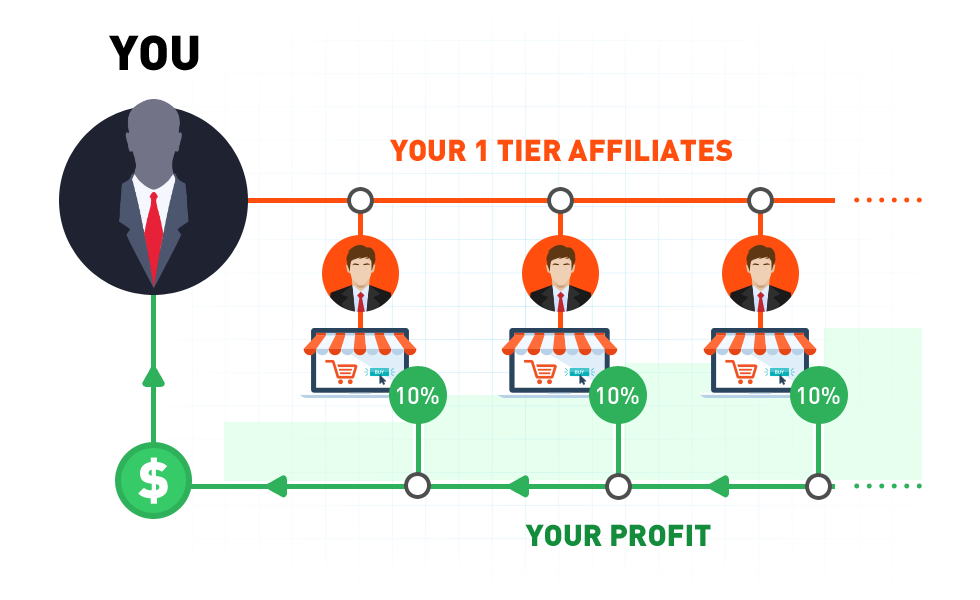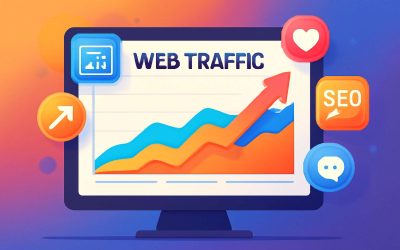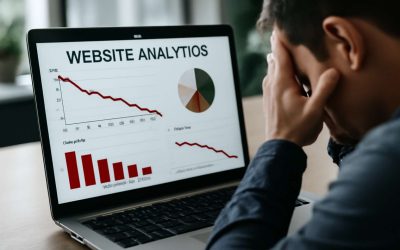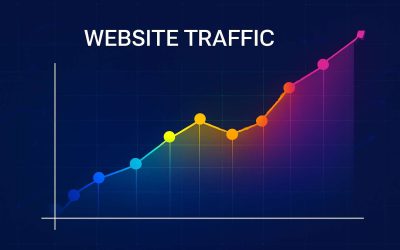Understanding Website Traffic
Definition of Website Traffic – Exploring what website traffic entails and its significance for online businesses
In the shadowed corridors of the digital realm, the term “website traffic meaning” whispers like a secret waiting to be uncovered. It is the lifeblood coursing through the veins of every online business, a silent gauge of its influence and reach. To truly grasp what website traffic entails is to understand the unseen currents that drive visitors through virtual corridors, each click a faint echo of curiosity or necessity.
Imagine a steady stream of visitors, each one a ghostly presence that can either breathe vitality into your online existence or fade into obscurity. For businesses in South Africa, measuring website traffic offers a glimpse into the pulse of their digital presence. It reveals not just the volume of visitors but the patterns, the peaks and troughs that tell a story of engagement or neglect.
- Number of visitors
- Sources of traffic
- Behavior of visitors
Understanding these elements transforms raw numbers into a narrative—an intricate tapestry revealing what draws people in and what causes them to turn away into the shadows. The essence of website traffic meaning lies in this mysterious dance, a silent symphony of human curiosity and digital connection.
Types of Website Traffic – Differentiating between organic, direct, referral, social, paid, and other traffic sources
Understanding the different types of website traffic is crucial in decoding the true meaning of website traffic. It’s not just about counting visitors; it’s about recognizing where they come from and how they interact with your site. Each source provides a unique insight into the digital journey of your audience. For instance, organic traffic indicates visitors finding your site through search engines—an indicator of your SEO effectiveness. Direct traffic reveals those who type your URL directly into their browser, often loyal customers or returning visitors.
Referral traffic, on the other hand, comes from links on other websites, highlighting your partnerships or content outreach efforts. Social traffic stems from social media platforms, reflecting your brand’s engagement in the digital social sphere. Paid traffic involves visitors driven through advertising campaigns, offering measurable ROI. To better understand these distinctions, consider this:
- Organic: Search engine results
- Direct: URL input or bookmark
- Referral: External links on other websites
- Social: Social media platforms
- Paid: Ads and sponsored content
Each category of website traffic meaning reveals different facets of your online presence. Recognizing these nuances helps South African businesses craft targeted strategies that resonate with their audience and optimize overall digital performance.
Importance of Website Traffic for Business Growth – Analyzing how traffic impacts brand visibility, conversions, and revenue
Understanding the website traffic meaning is fundamental to unlocking your online potential. When your digital doors are open, every visitor is a window into your brand’s visibility and relevance. High traffic volumes can translate into increased opportunities for conversions and revenue, but it’s the quality and sources of that traffic that truly matter. For instance, organic traffic—visitors arriving through search engines—often indicates a strong SEO foundation, while social traffic reflects your brand’s social media engagement and reach.
By analyzing these nuances, businesses can identify which channels drive the most valuable visitors and tailor their strategies accordingly. Recognizing the website traffic meaning helps you measure the impact of your marketing efforts, refine your messaging, and foster more meaningful interactions. In a competitive South African market, these insights are vital for standing out and establishing a resilient online presence.
Key Metrics to Measure Website Traffic
Visitor Count – Number of visitors visiting your website within a specific period
Imagine your website traffic meaning the number of visitors marching through your digital doors like eager shoppers on a bustling South African market day. This metric isn’t just a vanity number; it’s the pulse of your online presence. When you track visitor count, you’re essentially eavesdropping on the heartbeat of your digital empire, revealing how many souls are interested enough to click, scroll, and linger.
To truly understand what your website traffic means, focus on key metrics that paint a vivid picture of user engagement. For instance, consistent visitor count over time hints at sustained interest, while sudden spikes might be the result of a viral campaign or a well-timed social media push. These fluctuations can tell a story more intriguing than most soap operas! Monitoring these numbers helps you decipher whether your content resonates or if it’s time to shake things up.
- Number of visitors within a specific period
- Frequency of repeat visits
- Average session duration
Page Views – Total number of pages viewed by visitors
When it comes to understanding website traffic meaning, one vital metric often overlooked is page views. Think of page views as the digital equivalent of flipping through a magazine—every single page you turn counts. The total number of pages viewed by visitors offers a window into how compelling your content truly is. If visitors are clicking through multiple pages, it signals genuine interest and engagement, not just a fleeting glance.
Tracking page views can reveal which parts of your website captivate your audience and which sections need a facelift. For example, a spike in page views might occur after a viral social media campaign or a well-placed ad. Conversely, a lull might suggest it’s time to spice things up or optimize your content. Ultimately, page views are a cornerstone of website traffic meaning, offering insights that help you fine-tune your digital strategy and keep visitors coming back for more.
Session Duration – Average time visitors spend on your website
Picture this: visitors are strolling through your website, but how long they linger can be more telling than the number of visitors alone. Enter session duration—the average time visitors spend on your website. It’s like a digital handshake, revealing whether your content is a fleeting glance or a heartfelt conversation. A longer session duration often indicates that your content resonates deeply, keeping visitors hooked and eager to explore more.
Understanding session duration is crucial because it adds nuance to the website traffic meaning. If your traffic spikes but the session duration plummets, it might be akin to a party where everyone shows up but leaves early—indicating superficial engagement. Conversely, a healthy, sustained session duration suggests visitors find your site intriguing, leading to higher chances of conversions.
- Engagement levels
- Content quality
- User experience
These are the pillars that session duration can help illuminate, guiding your digital strategy to keep your audience captivated and your analytics glowing.
Bounce Rate – Percentage of visitors who leave after viewing only one page
A critical yet often misunderstood facet of the digital landscape is the bounce rate—a metric that whispers secrets about your website traffic meaning. Imagine a bustling marketplace where visitors arrive with eager eyes but leave after a mere glance; that fleeting glance is what bounce rate captures. It’s the percentage of visitors who view only a single page before disappearing into the digital ether, unfulfilled or unengaged.
When bounce rate spikes, it signals a disconnect—a mismatch between visitor expectations and your content’s promise. Conversely, a low bounce rate hints at captivating offerings, urging visitors to explore further. Understanding this vital metric reveals whether your website traffic meaning aligns with genuine engagement or superficial visits. After all, in the realm of online growth, every bounce is a story told—either of missed opportunities or of content that truly resonates.
Traffic Sources – Channels that drive visitors to your site
Understanding the intricacies of website traffic meaning goes far beyond mere numbers; it’s about deciphering the silent dialogue between your digital presence and its audience. When exploring key metrics, one must consider the diverse avenues—traffic sources—that channel visitors to your site. These channels serve as the arteries of your online ecosystem, each with its own unique rhythm and influence.
For instance, organic traffic—those visitors arriving through search engines—often signifies a strong alignment between your content and what users seek. Meanwhile, referral and social traffic reveal how your digital footprint extends through partnerships and social platforms, weaving a complex web of engagement. Recognizing which sources dominate your traffic profile provides profound insights into your website’s reach and relevance. Whether it’s through a targeted paid campaign or organic discovery, every channel contributes to the broader narrative of your website traffic meaning, shaping how your brand resonates in the crowded digital marketplace.
Analyzing Website Traffic Data for SEO
Identifying High-Performing Channels – Understanding which sources generate quality traffic
Unlocking the true potential of your online presence hinges on more than just raw numbers; it’s about deciphering the story behind the website traffic meaning. By analyzing website traffic data, businesses can identify which channels are truly high-performing—those that attract quality visitors eager to engage. For instance, organic search often delivers highly relevant traffic, while social media campaigns can generate bursts of visibility. Recognizing these patterns allows for smarter allocation of marketing resources and tailored strategies.
Understanding which sources generate valuable traffic isn’t just about quantity—it’s about quality. High-performing channels often correlate with increased conversions, longer session durations, and lower bounce rates. To streamline this process, consider focusing on:

- Organic search
- Referral links from reputable sites
- Targeted social media efforts
By honing in on these sources, you can better grasp the website traffic meaning—what truly drives your audience—and refine your approach for sustained growth and engagement in the South African digital landscape. This strategic insight offers a clearer view of how visitors are discovering and interacting with your brand, setting the stage for impactful online success.
Keyword Performance and Traffic – How keywords influence and correlate with traffic levels
Understanding the intricate dance between keywords and website traffic meaning reveals the secret symphony behind your online presence. When visitors arrive through specific search terms, they carry with them intent—an unspoken message about what they seek. Analyzing how these keywords influence traffic levels illuminates the pathways your audience takes, transforming raw numbers into a compelling narrative. It’s not merely about volume, but about the resonance of each visit, each click echoing your SEO strategy’s effectiveness.
By examining the correlation between keyword performance and traffic, businesses uncover which phrases magnetize quality visitors—those eager to engage and convert. Consider the following:
- High-ranking keywords that consistently attract targeted traffic
- Emerging search trends that signal shifting consumer interests
- Underperforming keywords that may require strategic refinement
This meticulous analysis turns data into insight, revealing the true essence of website traffic meaning—how well your content aligns with audience intent. When you grasp the influence of keywords on traffic levels, every digital move becomes a purposeful step towards sustained growth in South Africa’s dynamic online ecosystem.
User Engagement Metrics – Assessing how visitors interact with your content
Understanding the true website traffic meaning is like deciphering the secret code behind your online success. It’s not just a jumble of numbers but a reflection of how well your content resonates with your audience. When analyzing website traffic data, the goal is to see how visitors are engaging—are they sticking around or bouncing faster than a springbok at a watering hole?
By diving deep into user engagement metrics, you uncover the story behind the numbers. For example, a high session duration signals that your content is captivating, while a low bounce rate suggests visitors find what they’re after. This kind of insight transforms mere traffic figures into a vivid narrative of user behavior and preferences. In South Africa’s bustling digital landscape, understanding these nuances is key to tailoring your SEO strategy for maximum impact.
Evaluating traffic sources and visitor interactions reveals which channels truly drive quality traffic—those precious visitors eager to engage or convert. Whether it’s organic search, social media, or direct visits, each interaction offers clues about your website traffic meaning and how well your digital footprint aligns with audience intent. When every click counts, knowing how visitors behave on your site becomes the cornerstone of a thriving online presence.
Traffic Trends and Seasonality – Recognizing patterns over time for strategic planning
Understanding website traffic meaning transforms raw numbers into a powerful compass for your digital journey. Recognizing patterns over time reveals the ebbs and flows that shape your online presence, much like the changing seasons in South Africa’s vibrant landscape. By analyzing traffic trends, you can anticipate peaks during festive seasons or quieter periods and adjust your SEO strategy accordingly. This strategic foresight not only boosts your visibility but also aligns your content with what your audience seeks most.
Tracking these shifts often involves examining traffic sources and visitor interactions, which serve as the navigational stars guiding your efforts. For instance, a spike in organic search during December might coincide with holiday shopping, while social media surges can indicate successful campaigns. Recognizing such seasonality helps you craft content that resonates exactly when your audience is most receptive, turning fleeting spikes into sustained growth. When every visitor counts, understanding how traffic trends evolve over time becomes the secret to unlocking your website’s full potential.
Optimizing Website Traffic for Better SEO Outcomes
SEO Strategies to Increase Organic Traffic – Implementing on-page, off-page, and technical SEO techniques
Understanding the website traffic meaning can feel like deciphering an ancient code, but it’s actually the lifeblood of any thriving online venture. Think of it as the pulse that indicates how well your digital storefront is doing—more visitors often mean a healthier, more vibrant business. Yet, not all traffic is created equal; some visitors linger, while others make a swift exit, leaving behind a trail of valuable insights. This is where optimizing website traffic becomes an art form, blending on-page, off-page, and technical SEO techniques to attract the right crowd.
For instance, focusing on improving keyword performance and traffic can dramatically influence your organic traffic, turning casual browsers into loyal customers. It’s essential to understand which traffic sources drive genuine engagement, rather than just vanity metrics. After all, a high visitor count with a low bounce rate and longer session duration paints a much more compelling picture of your website traffic meaning—one that signals real business potential rather than just empty digital footsteps.

Content Marketing and Traffic Growth – Creating valuable content to attract and retain visitors
Optimizing website traffic for better SEO outcomes is much like nurturing a rural garden—each element requires care, patience, and strategic planning. Creating valuable content is the cornerstone of this process, drawing in visitors who are genuinely interested in what you offer. When your content resonates, it encourages longer stays and meaningful interactions, transforming casual browsers into loyal followers.
To truly harness the power of website traffic meaning, it’s vital to understand which content themes attract high-quality visitors. For instance, developing storytelling pieces that echo the everyday struggles and triumphs of rural life can forge genuine connections. This approach not only boosts traffic but also enhances user engagement metrics, signaling to search engines that your site is a trusted resource. Remember, it’s not just about the number of visitors—it’s about cultivating a community that values your voice.
Social Media and Referral Traffic – Leveraging social platforms and backlinks for increased traffic
Harnessing the true potential of website traffic meaning is like unlocking a secret garden—each pathway leading to new discoveries and deeper engagement. Social media platforms act as vibrant gateways, inviting visitors into your digital sanctuary, while backlinks serve as enchanted bridges connecting your site to other trusted realms. These channels work hand-in-hand to elevate your visibility, drawing high-quality traffic that is genuinely interested in your offerings.
By strategically leveraging social platforms and cultivating backlinks, you can direct a steady stream of visitors to your website, enriching the user experience and nurturing a loyal community. Remember, the essence of website traffic meaning isn’t just about numbers; it’s about inviting meaningful interactions that resonate and inspire. When these channels are woven seamlessly into your SEO tapestry, they amplify your reach and transform casual browsers into devoted followers.
Paid Advertising and Traffic Boosting – Using PPC and display ads effectively
Optimizing website traffic meaning takes on a nuanced dimension when integrating paid advertising channels like PPC and display ads. These tools act as precision instruments—delivering targeted messages directly to audiences already primed for engagement. By carefully crafting compelling ad content and selecting the right platforms, marketers can significantly amplify their site’s visibility and attract high-quality visitors.
Effective use of paid advertising involves understanding the intricacies of traffic sources and how they influence overall website traffic meaning. An ordered approach can be particularly beneficial:
- Identify the most relevant keywords and audience segments.
- Design visually appealing, persuasive display ads tailored to those segments.
- Monitor ad performance through metrics like click-through rates and conversion ratios.
- Refine targeting parameters to maximize return on investment and sustain a steady traffic influx.
Harnessing these techniques ensures that each advertising dollar contributes to a deeper, more meaningful engagement—transforming transient visits into enduring relationships. When paid advertising is integrated thoughtfully into a broader SEO strategy, it becomes a catalyst for elevating website traffic meaning, ultimately fostering a dynamic digital presence that resonates with South African audiences and beyond.
Tools to Track and Improve Website Traffic
Google Analytics – The primary tool for comprehensive traffic analysis
Understanding the website traffic meaning is essential for anyone eager to turn digital presence into real growth. Among the myriad tools available, Google Analytics stands out as the primary resource for comprehensive traffic analysis. Its detailed reports reveal not just how many visitors arrive but also where they come from and what they do once on your site.
By examining metrics like visitor count, page views, and session duration, businesses gain a clearer picture of their audience’s behavior. This insight allows for tailored strategies that enhance user engagement and optimize the website traffic meaning. For example, identifying high-performing channels or understanding keyword performance can help refine your SEO efforts.
Ultimately, tools like Google Analytics transform raw traffic data into actionable insights, guiding website owners through the complex landscape of digital growth. Such precise analysis is vital in South Africa’s competitive online market, ensuring your site resonates with the right visitors and sustains meaningful engagement.
Other Analytics Platforms – Exploring alternatives like SEMrush, Ahrefs, and Hotjar
In the vast digital landscape, where every click echoes like footsteps in an expansive corridor, understanding the website traffic meaning is vital for those seeking to carve a prominent niche. While Google Analytics remains the stalwart in decoding this symphony of data, alternative tools offer their own unique melodies. Platforms like SEMrush, Ahrefs, and Hotjar serve as compasses for navigating the complex terrain of online engagement. They unveil not just numbers but stories—of visitor behavior, source origins, and user interactions that breathe life into raw data.
Consider SEMrush, which provides in-depth insights into keyword performance and competitive analysis, illuminating which pathways attract the most traffic. Ahrefs excels in backlink analysis and content exploration, revealing the unseen currents guiding visitors to your shores. Meanwhile, Hotjar employs heatmaps and session recordings, offering a window into the visceral experience of your website visitors, revealing where they linger and where they lose interest.
- Identify high-performing channels
- Refine SEO strategies based on real-time insights
- Enhance user engagement through behavioral data
Together, these tools transform the elusive concept of website traffic into a tangible, actionable masterpiece—allowing digital entrepreneurs in South Africa to craft experiences that resonate deeply and engage authentically.
Using Data to Make Informed Decisions – Applying analytics insights to refine marketing strategies
Harnessing the power of analytics transforms raw website traffic meaning into a strategic weapon. By scrutinizing data from tools like Google Analytics or Hotjar, businesses can uncover hidden patterns that reveal which channels truly resonate with their audience. This isn’t just about numbers; it’s about reading the story behind each visitor’s journey, their preferences, and their behavior.
Using these insights, marketers can identify high-performing channels that bring in quality traffic—whether from social media, referral links, or organic searches. They can then refine SEO strategies, focusing efforts on the keywords and content that drive the most engagement. For example, understanding session duration and bounce rate allows for a nuanced approach to content creation, ensuring every piece captivates visitors longer.
In the end, applying analytics insights isn’t merely about tracking website traffic meaning—it’s about turning data into a compelling narrative that guides smarter, more effective marketing decisions.



0 Comments